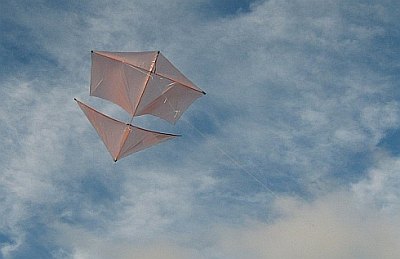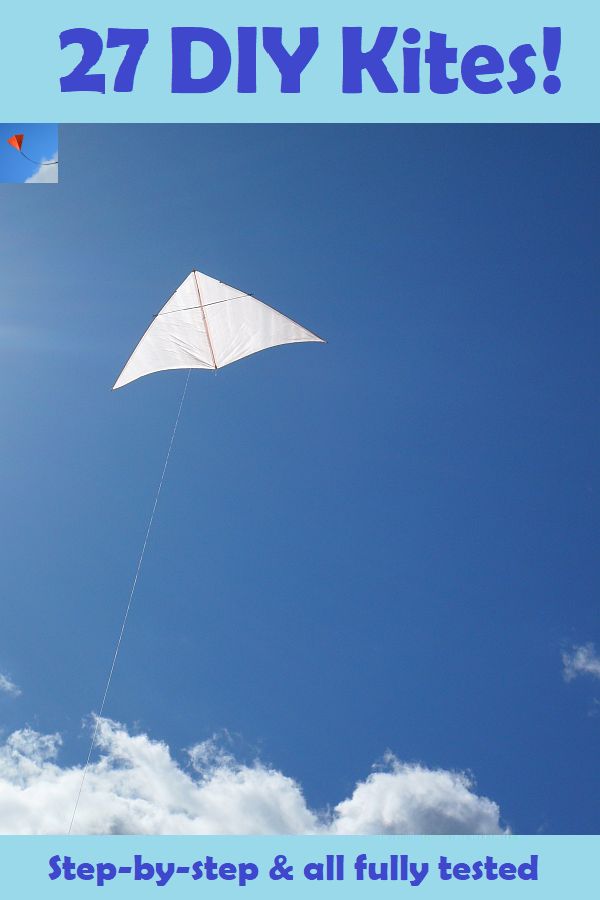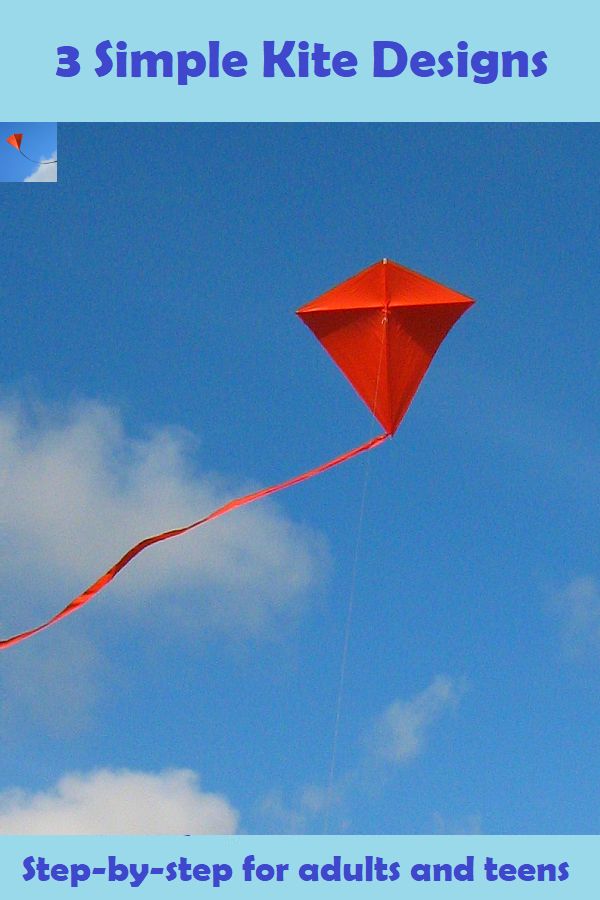- Home Page
- Better Kites
How to Make a Kite
Twenty Seven Better Kites! Step-By-Step
If you want to learn how to make a kite or two, you have definitely come to the right spot!
Perhaps you have made plenty but are always on the lookout for more designs and ideas. In any case, some of the most popular single-line designs being flown in the Western world are covered here.
For example, there's:
- the quick and easy sled
- the universally recognized diamond
- the birdlike delta, which is nearly as well known
- the barn door, which is uniquely American
- the classic roller, which has German origins
- plus a number of others for even more of a building challenge
And the kiting culture of Japan is represented with the rokkaku and the sode.
(Regarding that pinnable image—it's much bigger when pinned.)
How to Make a Kite—Cheaply!
The emphasis here is on very cheap materials. Make them all for just a few dollars!
Not only that, but hardly any tools are required. Who hasn't got a pair of scissors and a ruler lying around somewhere? Perhaps you might need to beg borrow or steal, I mean buy, a small hacksaw. But that's about it! No special fittings or expensive specialized tools are needed.
Learning how to make a kite from bamboo skewers or dowel and plastic is fun, and they do fly really well! You can see for yourself in the video for each design, showing the original in flight.
Dowel Series
(fairly big, light to moderate winds)
2-Skewer Series
(medium, light to moderate winds)
1-Skewer Series
(quite small, mainly moderate winds)
In addition, there are three box kites.
These all fly well in moderate winds, and the 2-Skewer design can cope with much stronger winds as well:
- the Dowel Box kite
- the 2-Skewer Box kite
- the 1-Skewer Box kite
Wind-Speed Handy Reference
Light Air
1-5 kph
1-3 mph
1-3 knts
Beaufort 1
Light breeze
6–11 kph
4–7 mph
4–6 knts
Beaufort 2
Gentle ...
12–19 kph
8–12 mph
7–10 knts
Beaufort 3
Moderate ...
20–28 kph
13–18 mph
11–16 knts
Beaufort 4
Fresh ...
29–38 kph
19–24 mph
17–21 knts
Beaufort 5
Strong ...
39–49 kph
25–31 mph
22–27 knts
Beaufort 6
High Wind
50-61 kph
32-38 mph
28-33 knts
Beaufort 7
Gale
62-74 kph
39-46 mph
34-40 knts
Beaufort 8
Some Odds'n'Sods
Most of those dowel kites employ a bowed cross-spar. Follow that link for tips on how to get the curvature and weight just right.
See how I made a simple winder for our 20-pound line. This is good for the skewer kites.
Since doing a page on single-surface star kites from around the world, I thought why not do a skewer version. So here they are—instructions for an MBK Skewer Star.
Finally, with plenty of people successfully making and flying the original 2-Skewer Delta, a link to that page is retained here:
Try the original 2-Skewer Delta.
(Note: MBK skewer kites are made from thin 12-inch bamboo skewers, which come in packs of 100. The metric size is 30 centimeters long x 2.5 millimeters thick; 3-millimeter skewers are usable, but 2.5 millimeters is best!)
More MBK Kite Info
 MBK Dowel Roller—photogenic even in pale orange
MBK Dowel Roller—photogenic even in pale orangeFor each kite in the lists of links up there, plus the box kites, there is:
- a 20-second video of the kite in flight
- a template graphic showing you the sail shape and dimensions
- a detailed set of step-by-step instructions with a photo for each step
- a launch photo or an inflight closeup of the kite
Although this is quite basic kite making, the designs do get a little more complex and time consuming as you move from sled right through to dopero.
The 2-skewer designs have about four times as much sail area as the 1-skewer designs. Hence, it's easier to make them accurately. Plus, for any given sail material, a 2-skewer kite will be better in light breezes than a 1-skewer kite. The 1.2-meter dowel kites are another step up again, with a roughly fourfold increase in sail area compared with the 2-skewer kites! However, the strength-to-weight ratio of hardwood dowel is not as good as bamboo.
If you haven't made many before, I hope you really enjoy learning how to make a kite!
Have a bit of fun trying to figure out which of my kites is zipping around the sky in a gusty moderate breeze in the video up there!







